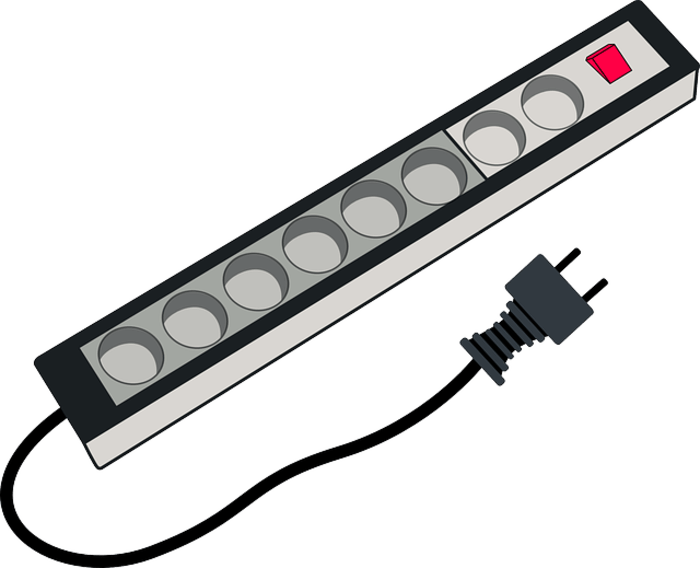Gauge is a critical aspect when shopping for extension cords. The wrong wire gauge can trigger a number of electrical hazards, from minor shocks to full-blown appliance breakdowns.
But when it comes to extension cord wire gauge, there’s no one-size-fits-all. The correct gauge rating would depend on the cable’s intended application.
As a general rule, it’s best to define your home or workplace’s power consumption needs and then pick an extension cable that meets (or surpasses) those requirements. This principle applies to other related electrical attachments, such as power cords and power strips.
In this article, we uncover what an extension wire gauge is and provide a comprehensive guide on how to select the ideal gauge rating.
What Is Extension Cord Wire Gauge?
Gauge is a unit used to measure the thickness or diameter of electrical cables. It specifically measures the diameter of electrical conductors, exclusive of the insulation and jacket.
Gauge ratings are denoted in numbers and the initial AWG (short for American Wire Gauge). For instance, a 12-gauge power cord would bear the designation 12 AWG on its labeling material.
One exciting fact about extension wire gauges is that the actual thickness of a cable’s conductors is inversely proportional to the assigned rating. The implication is that a 10-gauge extension cord has thicker conductors than a 12-gauge, 14-gauge, and 16-gauge cable.
So, while lower-gauge extension cords are typically assigned smaller numerical values, such cables actually have thicker conductor diameters. The best way to avoid this confusion is by using raw numbers when comparing gauge ratings across different extension cords.
Common Extension Cord Gauge Ratings
Extension cords used in most homes and offices are rated for 14 AWG or 12 AWG. Such cables are ideal for connecting standard electrical appliances, including televisions, woofers, laptops, and printers.
The conductors in a 14 AWG extension cord are 0.064 inches thick, while those used in 12 AWG wires measure 0.081 inches thick.
10 AWG and 8 AWG extension cords are also reasonably common. With a conductor thickness of 0.102 and 0.128 inches, respectively, such cables are suited for more power-hungry devices.
How Does Wire Gauge Impact an Extension Cord’s Power Handling Abilities?
An extension cord’s gauge affects three major parameters used in measuring the power draw of electrical appliances – amperage, voltage, and wattage.
Amperage refers to the quantity of electric current flowing through a circuit in a unit of time. It’s measured in amperes (amps).
Meanwhile, voltage (volts) denotes the force that drives electric current.
To better illustrate amperage and voltage, visualize a busy freeway. Now, amperage symbolizes the number of vehicles flowing through the road in unit time, while voltage represents the vehicles’ driving speed.
Lastly, wattage (watts) is the product of amperage and voltage.
Extension cords with smaller gauge ratings have thicker conductors, enabling them to handle higher amperage. Such cables also provide better resistance against voltage drop, making them excellent for powering appliances relatively further from electrical outlets.
Note that voltage decreases with an increase in cable length. Since extension cords are designed to extend the reach of electricity from the wall sockets to equipment, longer wires may experience a significant reduction in voltage due to increased resistance. Investing in thicker conductors is the surest way to manage dangerous voltage drops.
Conversely, thinner wires (those assigned larger AWG ratings) experience more current resistance. This can adversely impact both amperage and voltage.
Returning to our freeway illustration, a thinner wire corresponds with a narrower roadway. This would slow down the amount of traffic passing through the freeway in a unit’s time (amperage) while also reducing driving speed (voltage).
Just as expanding a freeway would optimize traffic flow, increasing conductor thickness enables an extension cord to handle appliances with higher ampacity and voltage ratings.
Ideal Appliances to Plug Into Extension Cords
Not every electrical device is meant to be used with an extension cord.
As mentioned, most extension cables are rated for 14 AWG and 12 AWG. This corresponds with standard household and office appliances, such as home entertainment systems, computing devices, and lighting fixtures.
Other equipment that you can safely plug into extension cords includes power tools, power washers, and sewing machines.
However, do not use your extension cord with heavy-duty appliances like refrigerators and sump pumps. Plug such equipment directly into the wall socket using its power cords.
It’s also essential to choose wisely between 14-gauge and 12-gauge extension cords. Since 12-gauge cables handle current more effectively, they’re better suited for outdoor applications with higher risks of voltage drop.
Even so, ensure the cord is duly rated for the outdoors. Check the label for the initials W (weatherproof), E (elastomer), and O (oil-resistance).
Optimizing Power Consumption With Proper Extension Cord Wire Gauge
There’s no such thing as the ideal extension cord wire gauge. Instead, the right conductor thickness depends on the appliances you’ll be plugging into the cable.
As a precaution, always use an extension cable whose conductors are rated for a higher gauge (smaller AWG number) than that of your electrical appliances. This will minimize electrical hazards while extending the longevity of the extension cord and connected devices.
It’s also prudent to avoid daisy-chaining your extension cords or plugging multiple appliances into them simultaneously. While the latter is generally not an issue for lighter-duty appliances like home entertainment systems, it can cause severe current overload for equipment with higher power draw.


